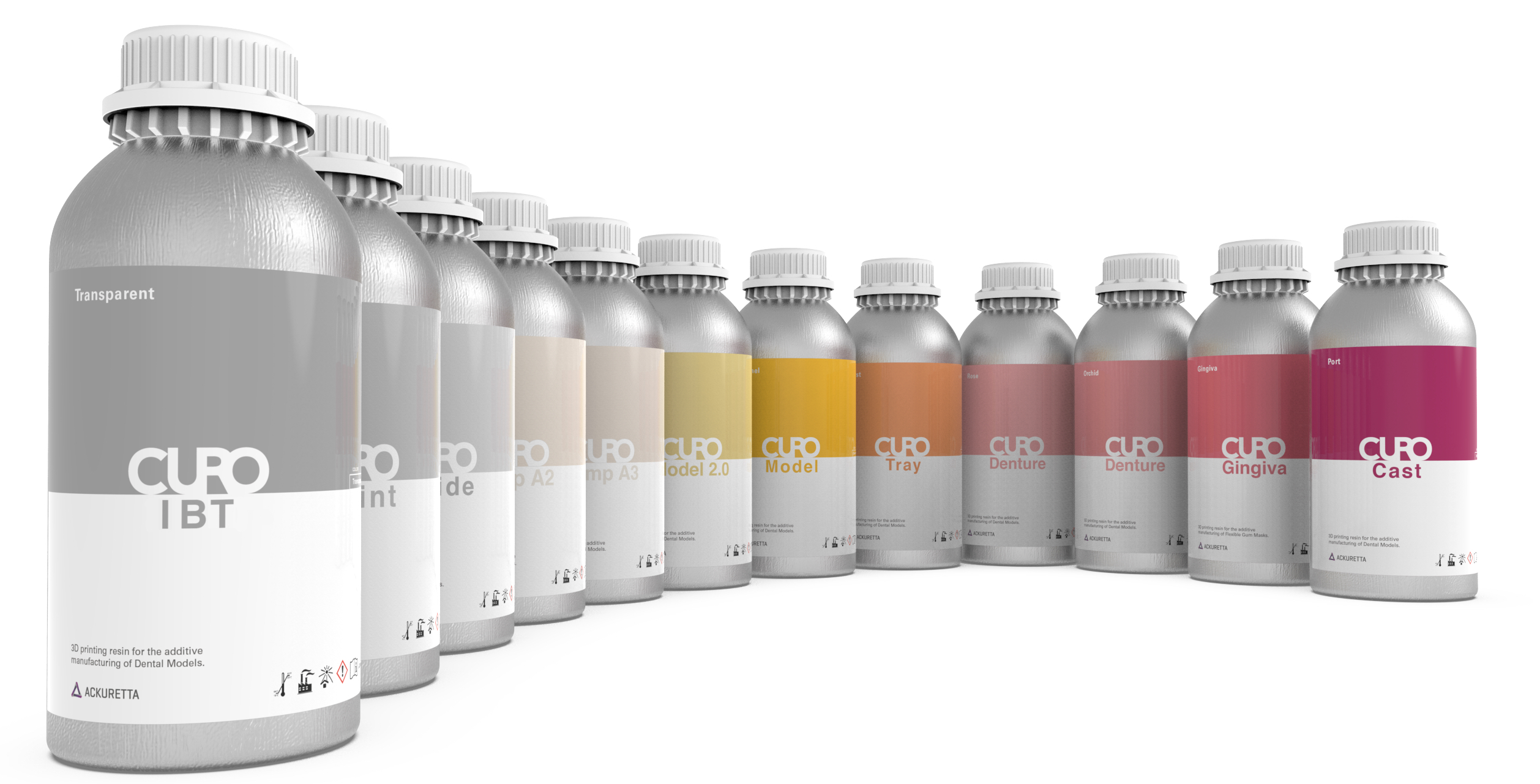Cleani: Ackuretta’s new approach to resin cleaning and washing
The challenges faced with classic resin washers
Anyone that has used a resin 3D printer before can say that part cleaning and resin removal is a pain. Whether you’re manually soaking the part in IPA (isopropyl alcohol) and delicately scrubbing with a toothbrush or using an ultrasonic, mono-tank resin washer, it’s a troublesome– and often tedious– process.
Existing resin washing stations definitely ease the process and make it safer for the user, but they do leave room for improvement:
Cumbersome and time-consuming workflows
After first taking the prints off the platform, they must be washed multiple times to ensure that most of the residue is gone before the item is ready for post-curing, another mandatory post-processing step. The latter involves re-exposing the part to a UV light for further, final solidification.
Furthermore, when a part is cleaned, it can leave some amount of resin in the tank. If the tank isn’t cleaned on a regular basis, there can be a build-up of residue that clings onto future parts or simply makes the machine less effective.
The tank must be cleaned frequently, especially between cycles with parts made of different types of resin to avoid any cross contamination. However, tank cleaning is a particularly laborious step– especially considering that many resin washer tanks are either large, undetachable, or both.
Unsuitable for small, fragile parts
Many of today’s solutions boast washing cycles with strong, ultrasonic vibrations, but at the cost of potentially breaking delicate parts with high levels of details and fine structures. Breaking parts translates into wasting both time and money on re-printing them.
Also, their mesh nets or baskets are often unfit for tiny resin objects which easily fall through the gaps. This is an additional waste of time for the user or technician who will need to fish around the bottom of the tank to retrieve parts such as dental crown models, small jewelry molds, or little figurines and toy models. Some resin cleaning machines don’t even have mesh nets.
Limited selection of resin cleaners
While there’s an extremely wide choice of build sizes for resin 3D printers, it isn’t the case for resin washers.
Most are either too small to fit several prints at a time, or too big and bulky, which is far from ideal for any 3D printing in-house workflow. Generally, ultrasonic washers are also very loud and noisy.
“Taking the work out of workflow” with Cleani
To make the resin 3D printing workflow efficient and effortless, Ackuretta designed Cleani, a dual-tank resin washer.

Cleani displays a unique value proposition and mix of features:
Work area conveniently split into two tanks
This is perhaps the most distinctive feature on this washer compared to other desktop resin washers: Ackuretta has split the work area into two independent tanks. The separation makes for a highly efficient two-step cleaning process that consumes 50% less IPA than a typical wash.
A typical workflow could be inserting a part in the first tank to remove most of the residue, and then moving it to the second tank to clean out the last amounts of residue.
Cleani is versatile and can be adapted to different kinds of prints and workflows. It’s also possible to use both tanks at the same time. This is particularly useful to clean both the printer’s platform itself and the printed parts simultaneously.

In addition, it greatly reduces the chances of cross contamination between types of resins. This makes it much safer for the end user, especially if it’s an object that will be in contact with their skin or mouth. For example, if you’re printing a temporary crown, it has to be 100% biocompatible with the patient’s mouth. Toy models must also be safe enough for kids to play with.
Gentle enough for 3D printed applications
Cleani washes prints with a gentle vortex that removes up to 90% of leftover resin per cycle, all without damaging small, fragile parts.
Another interesting characteristic on this washer is the fact that the tank baskets boast a finer mesh, which prevents the models from falling to the bottom of the tank.
Compact footprint and intuitive, discrete operation
Ackuretta’s Cleani is compact, lightweight, and silent enough for chairside use and in-house workflows. Professionals can easily move the machine around and the removable tanks make maintenance much more convenient.
Its quiet operation is a drastic relief compared to noisy ultrasonic machines, whether it’s used by jewelers, dental labs and clinics, figurine shops, or DIYers .
Cleani can easily be installed and intuitively operated via four easy soft-touch buttons: Mode, Time, Start, and Stop – there is no learning curve.
Ackuretta’s CURO resin lineup
As a specialist in the dental additive manufacturing industry, Ackuretta has also launched an entirely new range of resins for dental applications.
They’re all compatible with most resin 3D printers using DLP and LCD masking stereolithography technology, for both 385nm and 405nm wavelengths, and offer a two-year shelf life.

The extensive range covers the following dental use cases:
- Indirect bonding trays, (CURO IBT)
- Dental splints (CURO Splint)
- Surgical guides (CURO Guide)
- Temporary crowns and bridges (CURO Temp)
- Models and dies (CURO Model)
- Impression trays (CURO Tray)
- Denture bases (CURO Denture)
- Gingiva masks (CURO Gingiva)
- Casting crowns and bridges (CURO Cast)
 English
English  Français
Français

